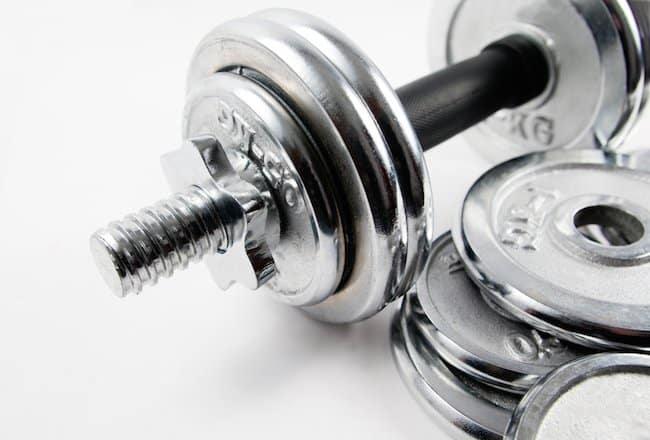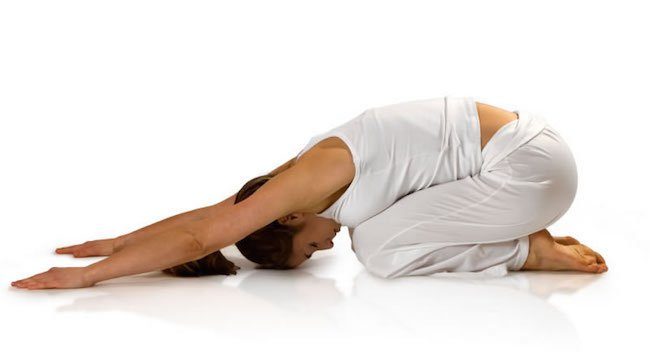
In the ever confusing diet and fitness world there are a number of rules which go around. A lot of these rules are as old as my grandfather and far from today’s science, however, still dominate. New rules do emerge all the time but they are not all worth following or their science is dubious or just simply misunderstood. Here I have picked 5 rules which I have found to be popular but could definitely be updated.
Rule 1: Aerobic exercise to burn fat
This rule still goes around at large and it is a favourite particularly with women. Possibly because it is combined with another popular rule which scares women that if they do weights they will get bulky. But that is a different matter.
So what does the rule say? If you want to burn a lot of calories and especially calories from fat then stick with aerobic medium intensity exercise. The rest kinds of exercise will not burn as much.
The reality: Your body does not shut down one fuel for the other (with the exception of the 10sec of creatine) so ultimately you are burning both fat and carbs (and protein in very small amounts) even when at the ‘fat burning zone’.
The percentages do vary however, how much fat you burn can depend on diet, genetics, gender, hormones etc. Prolonged aerobic exercise can also place considerable amount of stress on the body and therefore it can actually have the opposite effect.
Resistance exercise increases muscle mass and does increase the metabolic rate. Also the intensity can influence calories in many ways. First you can burn quite a lot of calories during a high intensity workout. Second it can have a post exercise calorie burning effect; so you could potentially be burning more calories after a high intensity workout.
What to do: Diet is a major factor in losing weight and in burning fat. Follow a healthy balance diet and avoid overloading on carbohydrates just before a workout (do make sure to have adequate amount of carbs though). Combine your aerobic workout with a resistance workout.
Some studies suggest that if you perform aerobic exercise after resistance exercise you may increase the amount of fat you use as a fuel as glycogen stores are low or depleted. Some people suggest exercising 1st thing in the morning and on an empty stomach; however, at that time your stress hormones will be at their highest especially on an empty stomach and exercise does induce a stress response. The combination may not be as good.
You can also try to cycle the intensity of your workout going from high to low to high and so on. There are a number of different things you can do to increase the amount of fat you use with both diet and exercise manipulation. Melting for hours on the gym bike or the elliptical machine is not exactly the best.
Rule 2: Exercises work only the top part or only the bottom part of your abdominal muscle.
Oh yes I have heard that at many of times and some personal trainers still recommend different exercises for targeting the different parts of your abdominal muscle. The rule or misconception says that some exercises will work the top part of your abdominal muscle and not the bottom and vice versa. I’m sure that body builders and/or those who aim for a six pack will be familiar with this rule.
The reality: In all my anatomy and physiology studying career I haven’t come across an abdominal muscle which works in 2 parts. So what are we talking about? This rule usually refers to is the rectus abdominis which runs along the length of your abdomen. The purpose of the muscle is to flex the spine; in other words is the muscle that helps to sit up. It is also a stabiliser muscle and it is the muscle which forms the ‘six pack’.
Now when a muscle contracts, any muscle, it will contract along the whole length of it. The exception is those muscles which fibres tend to go at different directions and are used for different movements (the deltoid is an example). There is also intensity of contraction along the muscle but to go into deep about muscle contractions is beyond what this article covers.
Rectus abdominis is superficial in the top part of it and at the lower part it goes inwards so that is one reason why it may be hard to show the ‘six pack’ at the lower part. Genetics is another one, not everybody can get that six pack formation with just exercising.
What to do. Most people know that 100 crunches a day every day is not the answer to a six pack. Do choose a few functional exercises such as pull ups, planks etc and a couple of crunches to condition your abdominal muscle.
Do exercise the surrounding muscles (side, back, hips) as muscle imbalances can lead to injuries. Add some resistance exercises which work a large amount of muscles not just static-one-muscle-targeting exercises.
Diet does play a role as well. Underneath the layer of fat you may have a nicely formed six pack. Keep to a balanced, healthy diet and avoid all those foods which can lead to increasing abdominal fat. Finally, do accept that it may be your built or just the way you are and not everybody gets a six pack unless is helped with unreal workouts, some drugs, unreal diets and possibly some surgery. I wouldn’t go there.
Rule 3: What to eat or don’t eat at all before and after a workout
I must admit this is not just 1 rule but more like a group of different rules all referring to eating and workouts. There is quite a lot of controversy about what to eat, and when to eat it when you work out.
Some suggest working out on an empty stomach, one of the old golden rules suggests carb overload before – protein after, others swear to protein all around.
The reality: What or when you eat depends on what you want to achieve and also your individual factors (i.e. lifestyle, diet, fitness, health etc). Exercising on an empty stomach can place considerable amount of stress in the body and so have the opposite from the desired result.
If you are getting ready to run 10 miles then you should make sure you have adequate amount of carbs. The reality is that there is quite a lot of controversy and some studies support one thing and some something else. The old carbs before – protein after is not a setting stone.
What to do: First establish what you want to achieve. Are you a marathon runner, you are aiming for weight loss, for performance, for a body building contest? Depending on what you want there are different ways to manipulate your diet and as it may be obvious we cannot look at every dietary combination in a paragraph.
In general for an average exercising Joe most studies suggest a combination of protein and carbs (60-40% or 50-50%) for post workout. Ideally consume food within 45min after your workout for a window of opportunity to increase calorie consumption, fat burning potential and muscle building.
Some suggest having protein before the workout so amino acids are available for muscle building. Do make sure you have adequate carbs to fuel exercise but there are ways to make fat burning more efficient. Finally, for more specialised stuff consult a trainer or a dietician/nutritionist in order to have a personalised diet plan or you can look at some of the areas we may have covered in our articles.
Rule 4: Don’t exercise when pregnant
I must say I am not sure where did this rule originate from or the exact reasoning behind it. I guess it is a precaution that many people chose to follow to avoid accidents or problems in pregnancy. Again I could be wrong as I have heard the rule many of times but not aware of its details.
The reality: Regardless of any rules always follow your consultant’s / doctor’s advice. Some pregnancies may have complications or indeed exercise may be contradicting. In general, exercise during pregnancy is considered beneficial rather than harmful. Some things to consider are that when pregnant the centre of gravity changes and a number of hormones get in action which can influence mobility (i.e. making joints suppler).
Exercise during pregnancy can have multiple benefits. It can help with the general health of both mother and baby and it can also help during birth and lactation. Other benefits can include weight management, back pain management, protection from pregnancy related diabetes, and some emotional support.
What to do: Above all 1st consult your doctor and make sure exercise and/or the type of exercise you choose to follow is appropriate and safe for you. Very strenuous types of exercise such as weight lifting are usually not recommended. Your doctor should be able to give you a list of different activities which may be best for you or a list of things to avoid. Inform your fitness professional and/or the setting that you are pregnant so they can give you the best advice about exercise.
Usually a lot of settings do offer exercise classes specially designed for pregnancy and for post-natal. Sometimes it may be better to stick with those classes/exercise groups which are more specialised for pregnancy. Swimming (or some other relevant water exercises), static cycling, walking, yoga and Pilates (adapted for pregnancy preferably or with an experienced instructor) are generally the most recommended.
Rule 5: Weight training and range of motion of exercise
In relation to the range of motion (ROM) I have heard a couple of different rules. This is a little bit like the ‘to eat or not to eat’ before a workout. Now some argue that when you are lifting weights you should perform the movement in a reduced ROM; kind of half way or within a specific range. The other side supports the opposite.
The reality: Range of motion (ROM) refers to the degree of movement which can take place in a joint. When performing an exercise you may not go through the full joint ROM due to logistics i.e. use of equipment, so it is kind of the exercise specific range of motion.
When you perform a movement there is a range within the full ROM in which the muscle has more power and strength. In addition, there is a range in which mainly the prime mover (main muscle executes movement) is involved. Those in favour of the limited ROM weight lifting base their argument in these 2 points and suggest that you can get better power and muscle building results.
However, the main downfall of this is that it increases the risk of injury. Performing exercises in their full ROM stretches and works the antagonists and is better for the joints. In some ways it is a matter of what you want. In real life you move in a number of ranges so it makes sense for both joints and muscles to be able to deal with this.
What to do: I am a supporter of performing exercises in their full range of motion. Body building fanatics support that the limited ROM is better for muscle building as you can lift more weights.
If you are at a competition level that may be of some use although I am not 100% sure it makes a lot of difference. For performance it may be good to train at full range but perform at limited range. Again it depends on what you are aiming for; full range is the 1st choice here as the last thing you want is injuries. For pure fitness and everyday exercise perform at full range. Even better choose functional exercises which use a number of different joints and muscles.










